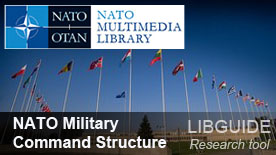ACT is one of two strategic commands at the head of NATO’s Command Structure, the other being Allied Command Operations (ACO). The Command Structure was reviewed in June 2011 as part of a wider process of reform not only to optimize the structure but to include new tasks derived from the 2010 Strategic Concept. The two strategic commands were maintained, as well as the Alliance’s levels of ambition.
Headquarters, Supreme Allied Commander Transformation (HQ SACT), located in Norfolk, Virginia houses the command structure of ACT. It is the only NATO command in North America and the only permanent NATO headquarters outside of Europe.
The Supreme Allied Commander Transformation (SAC-T) is responsible to the Military Committee, which is the senior military authority in NATO under the overall political authority of the North Atlantic Council (NAC) and the Nuclear Planning Group (NPG). The Military Committee is the primary source of military advice to the NAC and NPG, and is supported in its work by the International Military Staff.
HQ SACT directs ACT's various subordinate commands including the Joint Warfare Centre in Norway, the Joint Forces Training Centre in Poland, and the Joint Analysis and Lessons Learned Centre in Portugal. It also has strong links with national headquarters and entities such as the Centres of Excellence, as well as with the NATO Force Structure in general.

There are direct linkages between ACT, NATO educational facilities and various agencies, as well as with the US Joint Forces Command (US JFCOM), but the latter is currently in the process of being disbanded.
With the June 2011 reform, ACT is strengthening links with national headquarters and especially entities such as the Centres of Excellence, as well as with the NATO Force Structure in general. The only physical change was the move of the Undersea Research Centre (NURC) to the agency structure of the Alliance as an organizational element linked to research.
Evolution
Allied Command Transformation was initially formed as Allied Command Atlantic (ACLANT) at Norfolk, Virginia, in April 1952, a year after the Supreme Allied Headquarters (SHAPE) was established for Allied Command Europe (ACE).
ACLANT, together with ACE were streamlined at the end of the Cold War. In essence, the command structure was reduced from 78 headquarters to 20. There were the two overarching Strategic Commanders (SC), one for the Atlantic and one for Europe, with three Regional Commanders under the Supreme Allied Commander, Atlantic (SACLANT) and two under the Supreme Allied Commander, Europe (SACEUR).
During the 2002 Prague Summit, NATO’s military Command Structure was reorganized with a focus on becoming leaner and more efficient. Additionallly, Alliance thinking fundamentally shifted: the command structures became based on functionality rather than geography. The former Allied Command Europe (ACE) became the Allied Command Operations (ACO), responsible for all Alliance operations, including those previously undertaken by SACLANT. As such, one Strategic Command was focused on NATO’s operations--Allied Command Operations (ACO/SHAPE) -- and the other on transforming NATO--Allied Command Transformation (ACT).
The reform also resulted in a significant reduction in headquarters and Combined Air Operations Centres – from 32 command centres down to 9.
Restructuring was taken a step further in 2011 to ensure that military command capabilities were more flexible and affordable. At the Lisbon Summit, 19-20 November 2010, NATO leaders approved a generic model of the reform, which would enable the Alliance to meet the same level of ambition, providing command and control for two major joint operations and six smaller military operations. This reform principally affected ACO.


